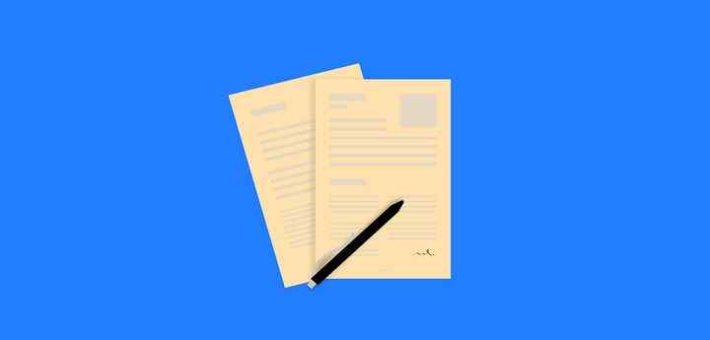More MCQs
HOME
Categories
Courses
Business Management MCQs
Business Communication MCQs
» The communication process MCQs
» Business communications MCQs
» Seven Cs of effective communication MCQs
» Intra-personal and interpersonal skills MCQs
» Forms of business communication MCQs
Letters and Circulars MCQs
After deciding that written communication is most appropriate, you need to decide what format it should take. Here on MCQs.club we have prepared Multiple-Choice Question (MCQs) on Letters and Circulars that fully cover the MCQs on business letters, McQs on CV writing, Memo writing MCQs, Minutes writing MCQs. Our prepared MCQs are helpful for Business management exams, Competitive exams and Professional accountancy exams.
- After deciding that written communication is most appropriate, you need to decide what format it should take.
- True
- False
- For internal written messages and increasingly for informal correspondence with external parties ___________ format is used.
- Enquiry
- Follow-up
- Memo
- Persuasive
- The general rule for writing business letters is that they should be no more than two pages long.
- False
- True
- The letter will give your reader an impression of you –Identify what aims it should achieve.
- thoughtful and careful
- friendly and polite
- clear and concise.
- All of the above
- Identify what are the components of business letter?
- Letterhead stationery
- Letter reference
- Receiver’s name and address
- Date and Salutation
- Subject heading
- Signatory’s name
- All of the above
- (I) (III) and (V) only
- (III) (IV) and (V) only
- None
- For Receiver’s name and address the guidance is:
- Use the receiver’s job title
- If you know the recipient’s name then always use it to make the letter personalised.
- Confine the address to three or maximum four lines.
- If relevant, enter PRIVATE & CONFIDENTIAL immediately before the name.
- All of the above
- For the “Date” It is conventional for business letters to exclude the ‘th’, ‘st’ and ‘nd’ from the day number.
- True
- False
- The salutation is the formal greeting at the opening of the letter. The conventions to follow include:
- Formal letters when writing to a company name or job title: Dear Sir/Sirs/Madam
- Formal letters where you know the name of the recipient – use ‘Dear’ + Mr/Mrs/Miss/Ms. + surname.
- Letters where you are very familiar with the recipient – use ‘Dear’ + forename.
- All of the above
- The subject heading is a useful component as it identifies the subject immediately and aids subsequent reference. The heading should:
- be in bold
- not be underlined.
- Both A&B
- None
- The guidance for presentation of the body of business letter include:
- use clear and correct English with full punctuation
- never indent the first sentence of each paragraph – paragraphs should always start against the left-hand margin
- use either left aligned or justified text
- All of the above
- when referring to numbers in the text of business letter:
- write numbers one to nine in words
- write numbers 10 upwards in numerals
- write the terms thousand, million, billion rather than k, mm or bb
- All of the above
- Identify the steps that provide a logical and thorough approach to constructing a persuasive business letter or circular.
- Identify the problem, purpose and audience
- Decide what you want to say
- Make an outline
- Structure and write your letter
- All of the above
- What are the main sections a well-structured letter will contain?
- Opening paragraph
- Body
- Close
- All of the above
- The “closing section” of the letter should:
- contain a ‘call to action’.
- tells the reader what you want them to do.
- be appropriate to summarise the key point of the letter to add emphasis in the closing paragraph.
- All of the above
- There may be times when you really do not know where to start with writing the letter. Some suggestions to help you ‘get started’ include:
- Make notes of your ideas as you think of them so they are available in future when you might need them.
- Ask colleagues for suggestions.
- Just make simple notes (not even sentences) initially – ignore punctuation and grammar which can be addressed later once you have constructed the message you actually want to communicate.
- Imagine you are having a conversation with the reader and ask yourself what you want to say to them
- All of the above
- (II) and (III) only
- (III) and (IV) only
- None
- By definition a letter of enquiry represents a request for further information. To increase the likelihood of the recipient replying with all the relevant information you need you should make sure you explain the problem clearly and specifically
- The above statemen is correct
- The above statement is incorrect
- Which of the following is correct regarding Follow-up letters?
- Follow-up letters are sent to promote or monitor a previous communication
- They can also be used to get feedback on a schedule, requirements or effectiveness of some kind of activity or service.
- A follow-up letter is similar to a letter of enquiry in that fundamentally it is still a request for further information.
- All of the above
- Which of the following is correct regarding Circular letters?
- A circular letter provides information to a large group of people.
- Circular letters should get straight to the point and not bury news amongst lots of other points.
- Both A&B
- None
- A covering letter (‘cover letter’ in short) is a letter sent with, and explaining the contents of, another document or a consignment of goods.
- The above definition is correct
- The above definition is incorrect
- CVs (also called resumes) provide an overview of a person’s experience and other qualifications.
- True
- False
- CVs can be used in a variety of circumstances including:
- Presenting a job candidate when approaching a prospective employer.
- Describing the Directors and key management as part of a business plan.
- Used in marketing material to demonstrate the credibility of staff to customers.
- All above the above
- ‘Best practice’ tips for preparing a CV include:
- The CV should appear to be thoroughly business-like and adopt a professional style of presentation
- The CV should highlight the applicant’s special talents and background that will benefit the prospective employer.
- The CV should demonstrate that the applicant can make a positive contribution towards the company’s business objectives.
- Use an easy-to-read style without a cluttered presentation. Insert bullet points or boxes to indicate separate points.
- Avoid using the “I” pronoun.
- The CV should be verified to ensure that all facts relating to prior employment, education and achievements are accurate.
- All of the above
- (II) and (III) only
- (I) (III) and (IV) only
- None
- The common formats for CVs include:
- Chronological
- Functional
- Both A&B
- None
- Chronological CV –
- List work history job-by-job starting with the most recent position first.
- Emphasize the candidate’s work skills, capabilities and achievements by presenting them immediately after the name and address of the applicant.
- Both A&B
- None
- Memo –
- A written message in business
- A short note written as a reminder
- Both A&B
- None
- When to use a memo, common situations include:
- Provide a written record of instructions, directions and responsibilities
- Confirm oral discussions
- Ask others for their ideas and opinions
- Thank several people for their assistance
- Report progress
- Circulate information to several colleagues at once.
- (I) and (IV) only
- (II) and (III) only
- (III) and (VI) only
- All of the above
- Technique one should adopt to writing a memo includes:
- Explain the problem
- Give the solution – state what you need from the reader
- Asking for help
- Close – polite and friendly.
- All of the above
- (II) and (IV) only
- (I) and (II) only
- None
- The memo incorporates which of the following elements:
- Record of when the email was sent
- Sender
- Addressee
- Carbon copy – ‘CC’
- Subject
- Greeting
- Message body
- Close
- (I) (III) (V) (VII) and (VIII) only
- (I) (V) (VII) (VIII) only
- All of the above
- None
- Agenda – list of items to be discussed at a formal meeting.
- The above definition is correct
- The above definition is incorrect
- The contents of an agenda for a formal meeting would include:
- Title, date, time and place of the meeting
- Purpose of the meeting
- Minutes of the previous meeting
- Apologies for absence
- Main body
- Date of next meeting
- All of the above
- (I) (III) (VI) only
- (I) (II) (III) only
- None
- What are minutes?
- A note or summary covering points to be remembered; a memorandum.
- An official record of the proceedings of a meeting.
- Both A&B
- None
- The reasons why minutes are prepared are:
- to form the basis of discussion at the next meeting
- to inform those who could not attend what was discussed
- as a reminder to those present what was discussed
- to remind everyone of the action points that were agreed – by whom and by when.
- All of the above
- The structure of the minutes should include:
- Name
- Purpose
- Location, time and date
- Whether a voting quorum was present
- Whether minutes from a previous meeting were approved and where necessary corrected
- Decisions made
- All of the above
- (III) (IV) and (VI) only
- (V) and (VI) only
- None
- While writing minutes common problems include:
- How to actually take the minutes during the meeting
- What style to adopt
- How much information to include
- How to lay them out
- All of the above
- The minutes of a meeting being the official and permanent record they must be:
- Accurate, Complete, Clear, Concise
- Written in a suitable tone
- Both A&B
- None
—More to come soon—
Read more
Read more
Read more
Read more




